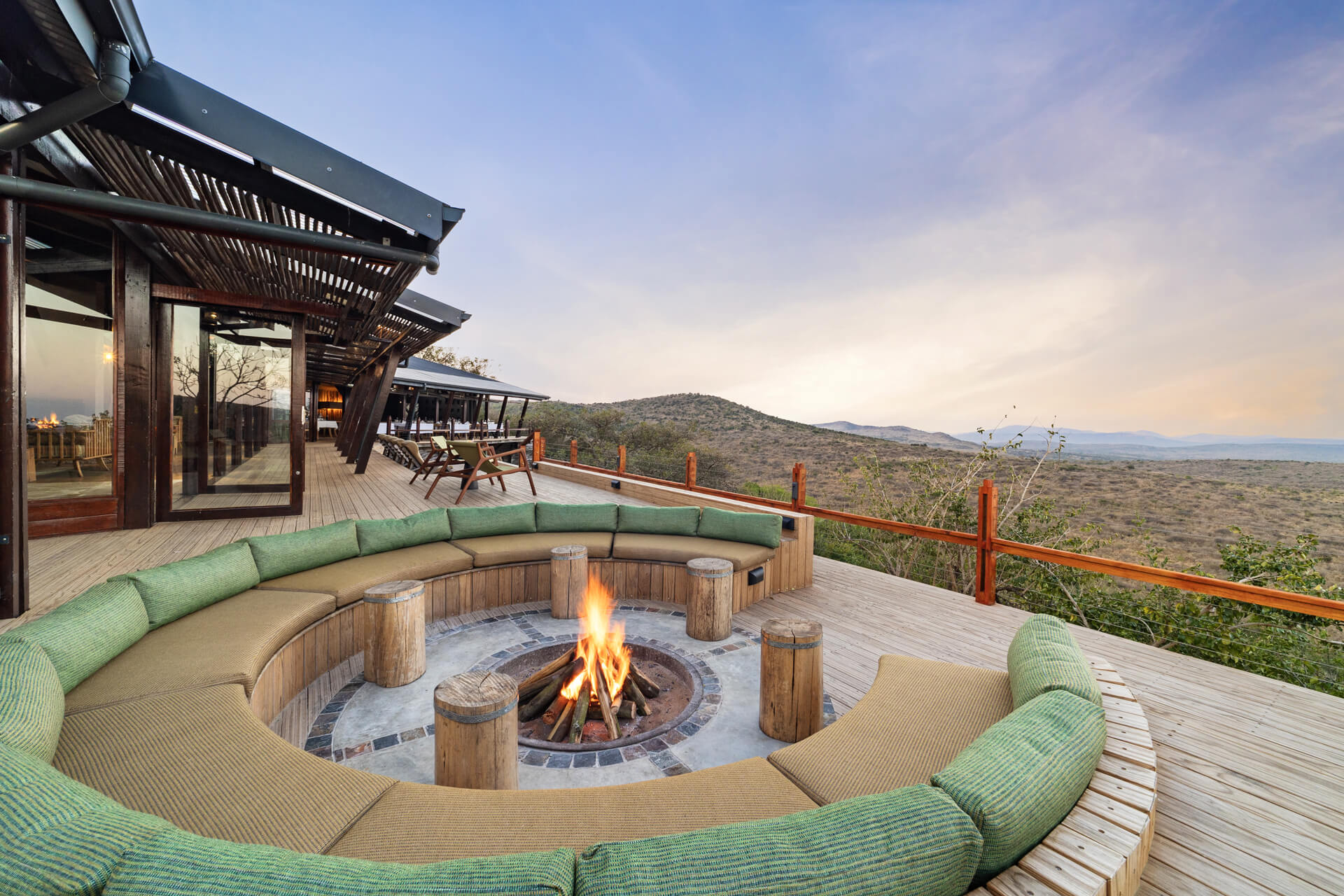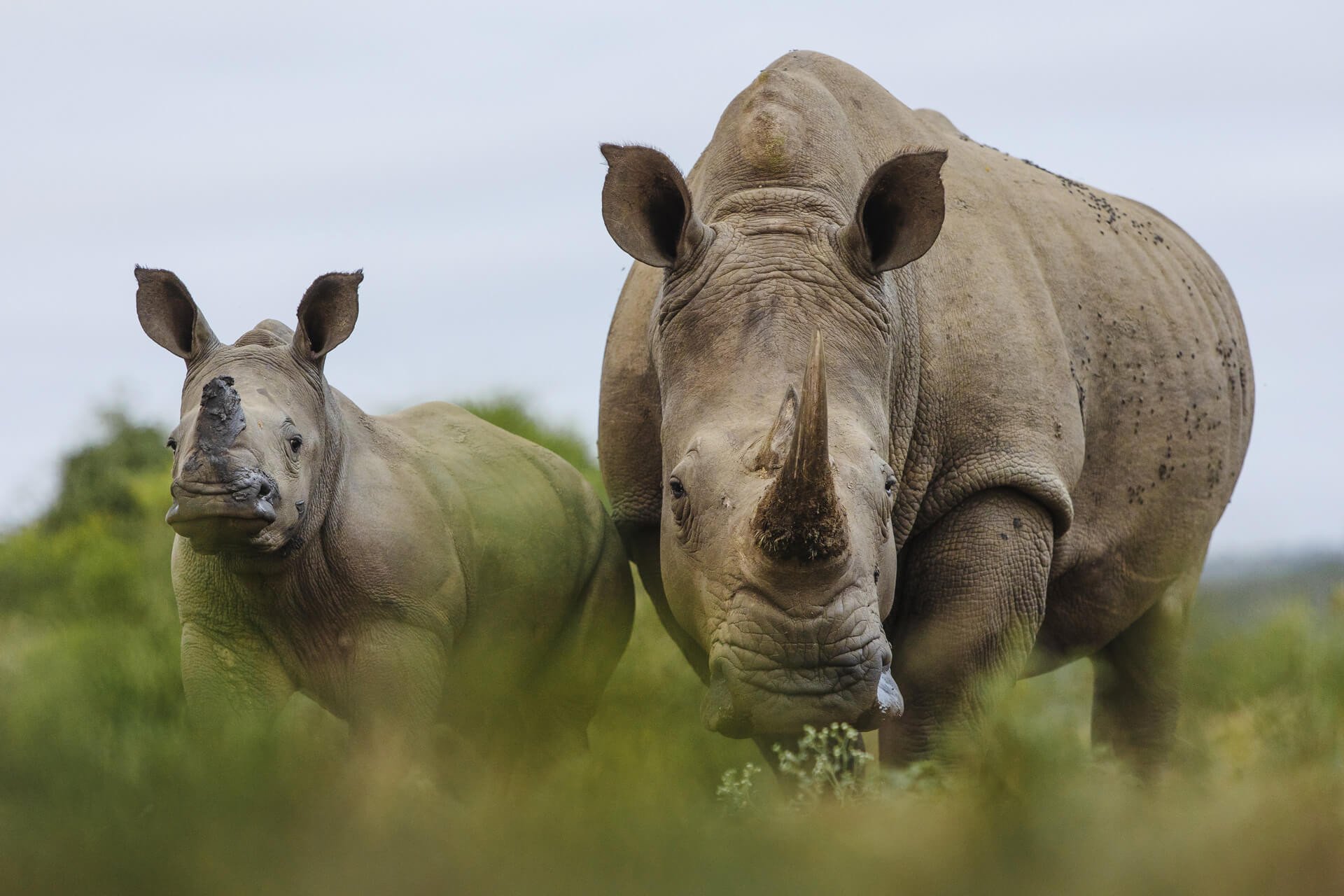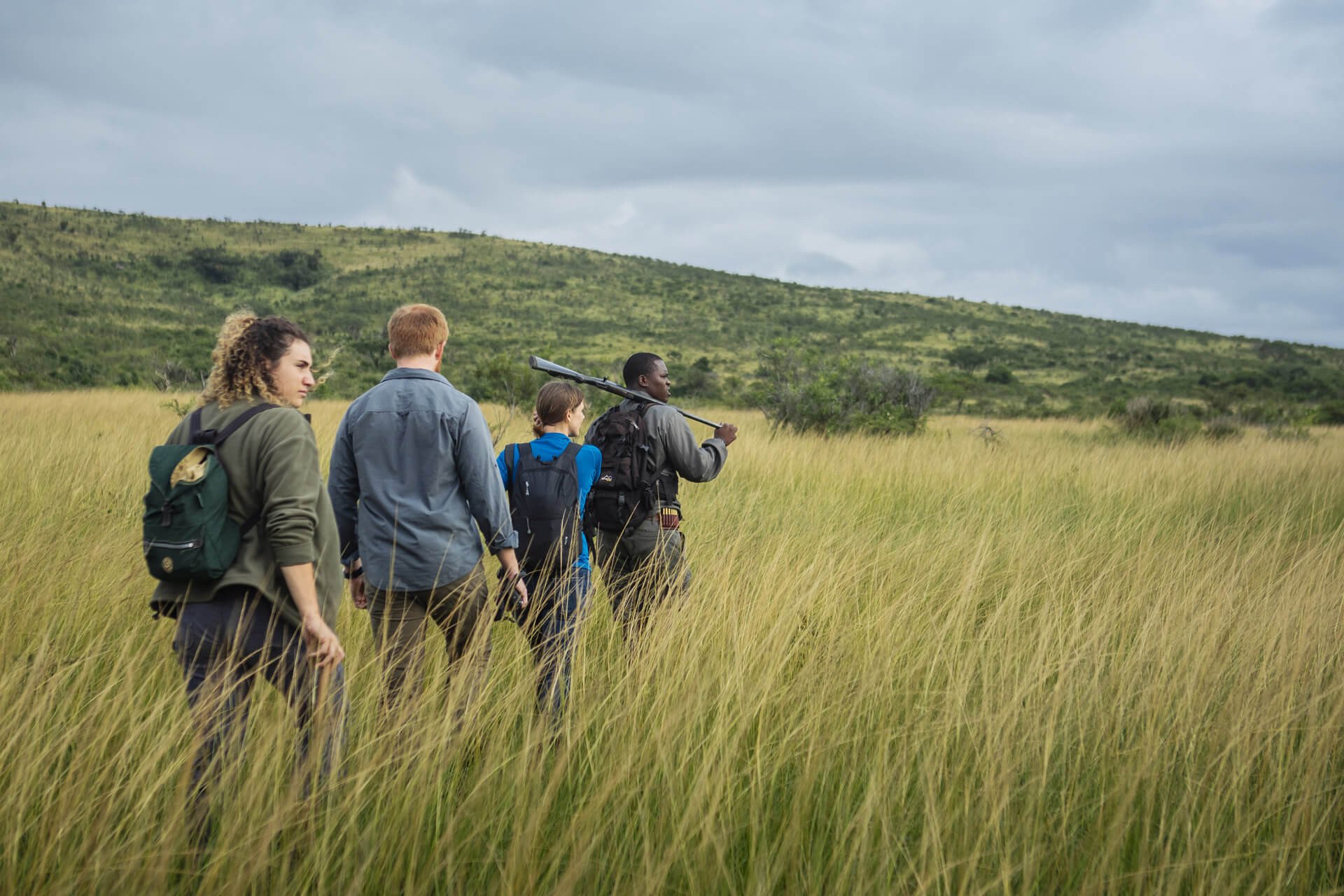blogMajestic Baobabs at Tsowa Safari Island
Posted in:The Lodges | Tsowa Island | Wildlife
Posted on:January 20, 2020
Dr Sharon Grussendorff is inspired by the great Baobabs of Tsowa Safari Island and writes about their mysterious beauty.
As humans we can learn so much from trees – especially from Baobabs the beauty and dignity of old age. Baobab trees are incredible trees that can live as long as 3 000 years! The older they are, the more beautiful and majestic they look. Baobab trees can grow enormous in size. One example is a hollow Baobab in Zimbabwe that can shelter 40 people inside its trunk!
Baobabs have smooth, shiny bark, with a light pink-grey or copper colour. In summer Baobabs are covered in nutritious green leaves which browsers (leaf-eating animals) love to eat. They also have white flowers and long fruit that can grow as much as 25 cm. Baobab trees are deciduous, so they look very bare in winter after losing their leaves, as well as their flowers and fruit.
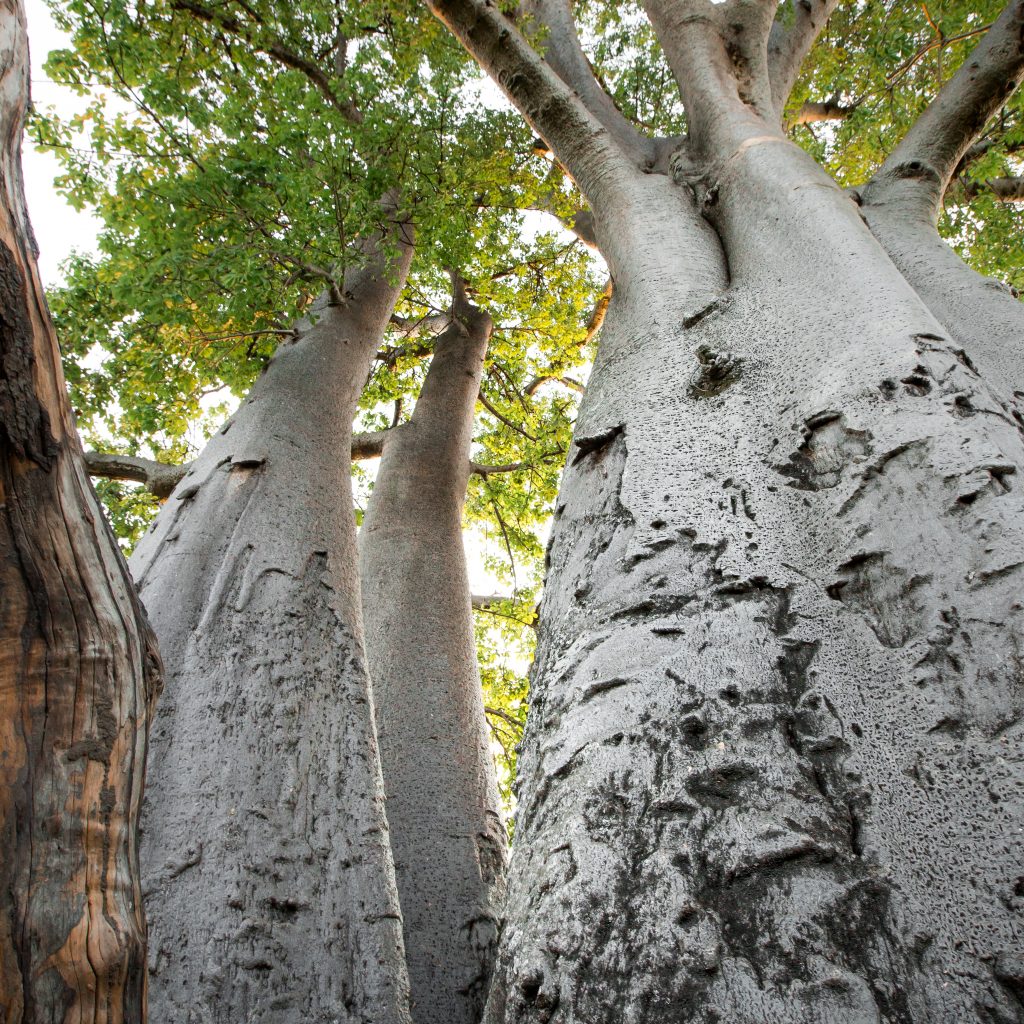
Baobabs are very useful trees for humans and many other creatures. Wild antelope and local cow herds eat the leaves which are full of vitamins and minerals. Birds, insects and other tiny creatures make their homes in the branches and trunk of the tree. Baboons eat the fruit, and fruit bats and bush babies drink the nectar, and in the process they pollinate the flowers. Baobabs store large amounts of water in their trunks, and so elephants, eland and other animals chew the bark to get moisture from it in the dry season.
Humans have found many uses for the different parts of the Baobab, for example making refreshing drinks from the fruit, using the leaves in stews, and making ropes, mats and baskets from the bark. Because the trees can grow so huge, people have even used them as shops, houses and bus shelters.
Baobabs are tough trees, and will survive even if they are burnt or stripped of their bark. They can survive in very dry conditions because they have huge roots, which are sometimes wider than the height of the tree!
Sadly, in the last few years some of Africa’s oldest and largest baobab trees have died. Having survived many harsh conditions for thousands of years, the one thing they cannot survive the human impact on the environment. Scientists say that climate change is causing high temperatures, and this seems to be weakening the once tough Baobab trees, making them more vulnerable to drought, diseases, fire and wind.
This is a reminder that when we see majestic African trees like the Baobab, we should not only appreciate them for their ancient beauty and dignity, and for the food and shelter that they offer to such a wide range of creatures, but we should remember that their future is in our hands. We need to care for the environment that has taken such good care of us all these years.
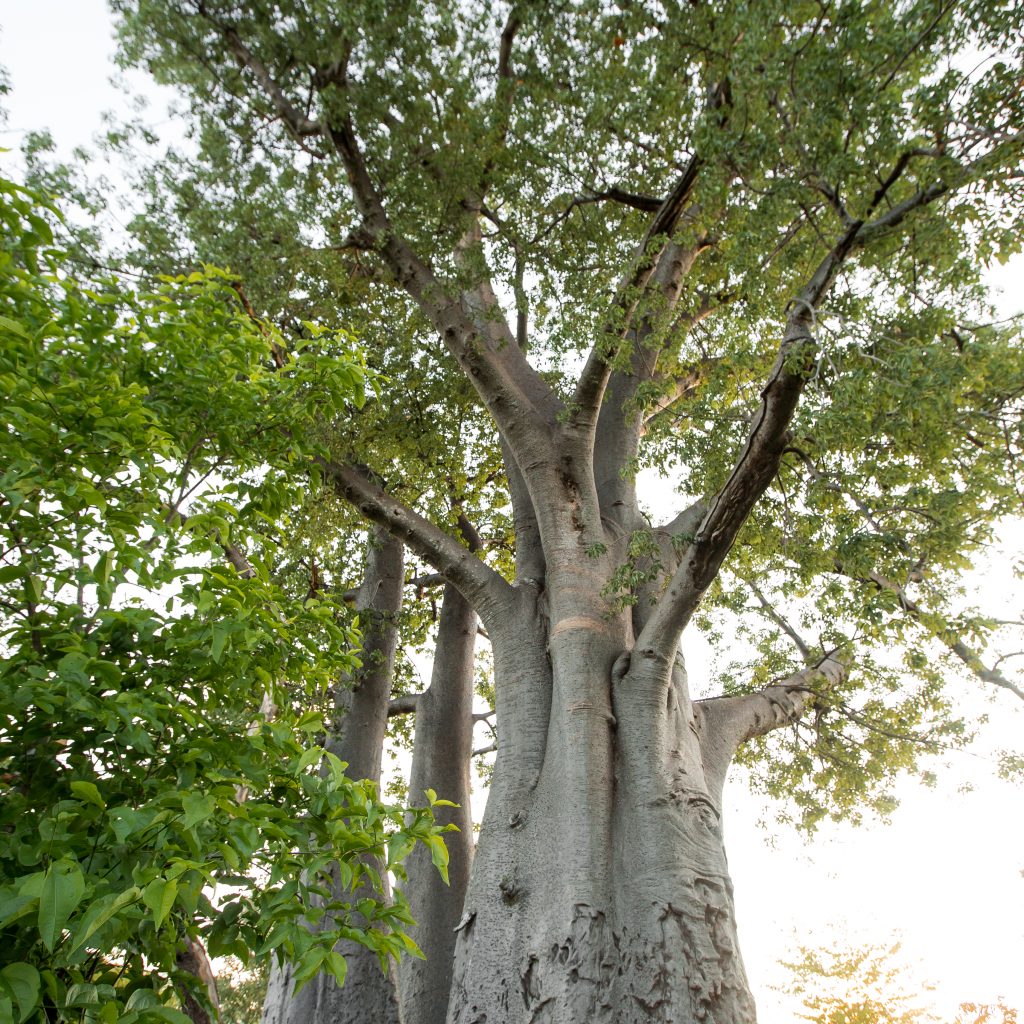
Sheltering in the majesty of these giants is a great privilege at Tsowa Safari Island, where Baobab are as much a feature of life as the powerful Zambezi River in which the island rests.


